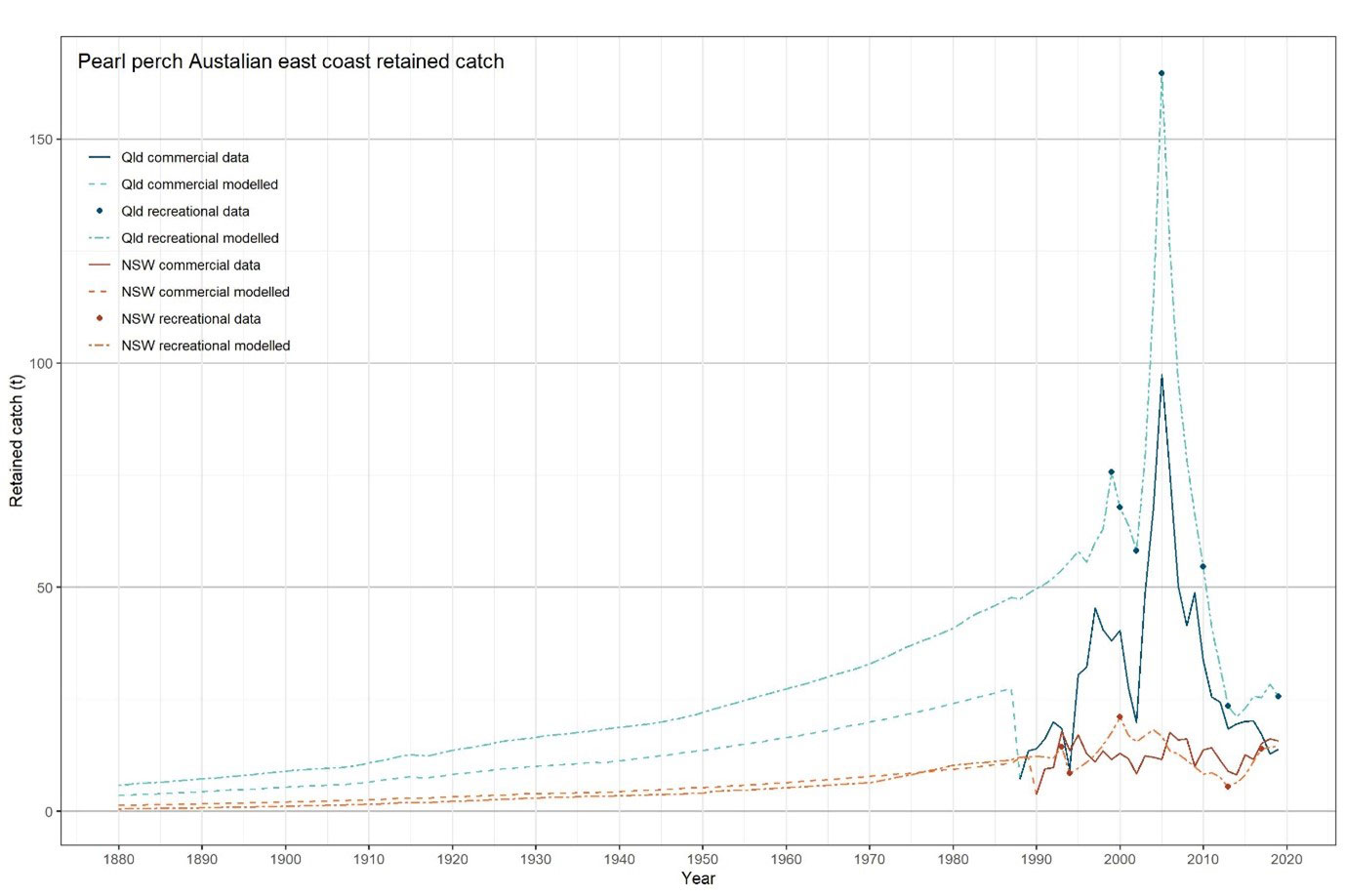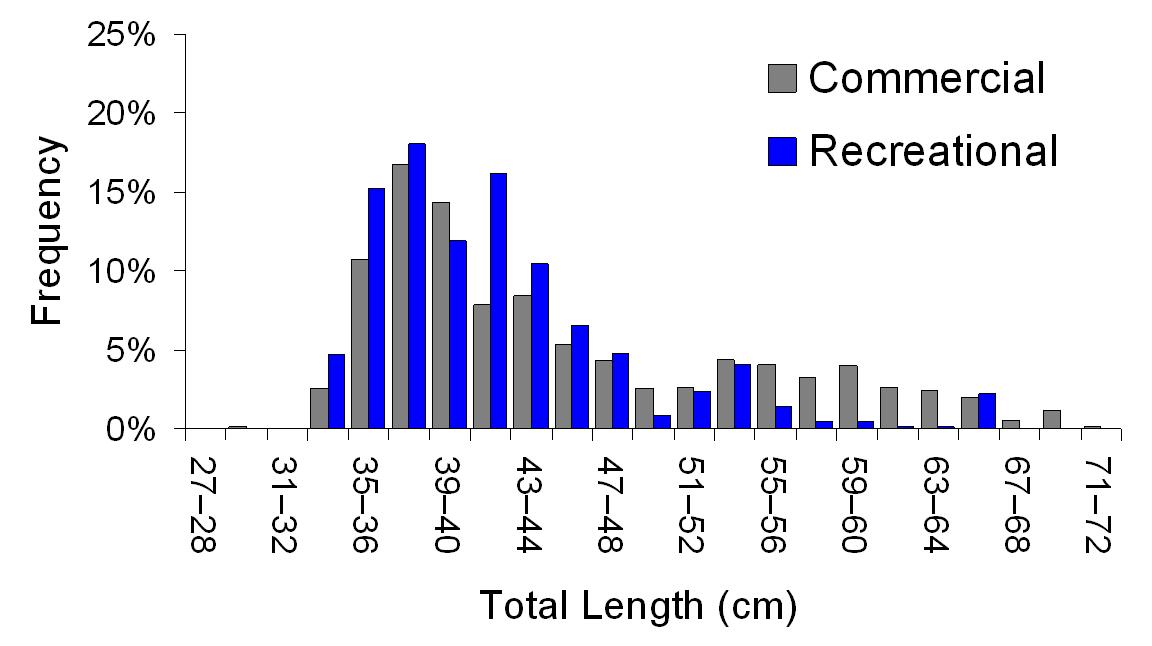Pearl perch stock
Species
- Pearl perch (Glaucosoma scapulare)
Fish stock status
Although a species may be classified as sustainable under the Status of Australian Fish Stocks (SAFS) framework, this does not mean that the stock is meeting Queensland targets under the harvest strategy.
| Stock | 2023 | 2020 | 2018 | 2016 | 2014 |
|---|---|---|---|---|---|
| Eastern Australia | Depleted | Depleted | Depleted | Transitional-depleting | Not Assessed |
Stock assessment
The 2022 stock assessment used current biological and commercial catch data to:
- determine the sustainability of the pearl perch stock in Queensland and New South Wales
- inform management decisions.
The assessment estimated that pearl perch stock was between 14% and 46% of unfished levels, and most likely at around 22%.
This biomass estimate is below the target reference point for pearl perch of 60%.
Differences between current and previous assessments
The 2022 assessment:
- analysed data through to December 2019
- included more up-to-date data on catches,
- new biological data such as fish length and age
- used Stock Synthesis, a modelling framework that was developed by the National Oceanic and Atmospheric Administration (United States).
- only analysed data through to December 2014
- used a stock assessment model custom-built by DAF.
Biomass estimates and key management actions
Estimated retained catch from 1880 to 2019, Queensland and New South Wales
Monitoring
The biological monitoring program collects data on length, sex and age of fish caught by commercial fishers in regions south of Swains reef.
Similar data is collected from recreational fishers through the boat ramp survey and Keen Anglers Program, only the study area extends to Cooktown.
The monitoring program began in 2006.
Length
Length information collected indicates that both recreational and commercial fishers retain a similar size range of fish, but larger fish (e.g. in 2012, fish larger than 55 cm) comprised a greater percentage of the commercial catch compared with the recreational catch.
Graph 1 – Length frequency by fishing sector
Age
Very few fish aged 10 years or older were observed in the catch.
The length and age information collected during the sampling program indicate variable growth rates. The variability in growth rates means a significant number of three, four and five year old pearl perch are less than 35 cm, and are therefore protected by the minimum legal size limit.
A recent study showed that pearl perch can be reproductively mature at 2 to 3 years of age. Which means that they can spawn for several years before they reach the minimum legal size. This variability is an important consideration when assessing the sustainability of the fishery.
The age information collected during the monitoring program has been used to illustrate the age-at-length relationship for pearl perch. For example a 49-50 cm pearl perch is most likely 6 years of age but could easily be as young as four or as old as 9.




